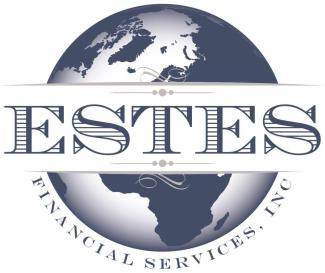
Life Insurance as an Accumulation Vehicle – Pros and Cons
Ever since the introduction of variable life insurance in the 1950s the debate over life insurance as an investment has raged on, and, to this day, the issue remains largely unsettled. Life insurance advocates can make a case for its unique properties – tax deferred growth, tax free death benefit, low interest loan provisions, and varied investment options – but then the critics can argue that it can be expensive and that there are better ways to invest your money. The reality is that, while both positions have merit, they also don’t apply equally to all financial situations. Everyone needs t o invest for their future, and nearly everybody should own life insurance. So, the issue comes down to how individuals can best accomplish both. The answer is not so clear cut.
The Savings/Investment Component of Life Insurance
There are two primary forms of life insurance: Term and Permanent. Term life is, essentially, pure insurance. You pay a premium that pays for a death benefit. Because the premium amount is based on your age and health, the cost of the insurance increases each year, and so does the premium, unless you buy level term. The “term” of these policies runs for a specific number of years – 15 to 30 years – after which it expires. So, term insurance is temporary insurance.
Permanent insurance combines the death benefit with a savings component. The premiums are higher because a portion goes to pay for the death benefit and a portion is allocated to the savings, or cash value. The purpose of the cash value account is to provide the insured with a way to accumulate savings on a tax favored basis that can be used to supplement future financial needs. But equally important, the cash value, which has a guaranteed growth element, also serves to lower your insurance costs as the policy ages. So, the premiums are level, and guaranteed for the life of the insured. With most cash value life insurance policies, the cash value accumulation can be used to pay for part or the entire premium in later years. So, conceivably, the policy can pay for itself after a certain period of time. Unlike term, the policy will remain in effect for as long as the premiums are paid.
This description of permanent insurance best characterizes what is called “whole life insurance,” a policy in which all of the components are fixed and guaranteed – the premium, the cash value growth, the death benefit. Variable life insurance is also a permanent plan, but, instead of the cash value tied to a guaranteed rate of growth, the insured can invest it in separately managed stock and bond accounts for the opportunity to achieve higher returns. Today’s variable life policies offer several options that can add protection against market declines. For instance, some policies offer a minimum rate guarantee so that, if the market loses ground, the cash value will still be credited with a minimum interest rate.
In all cases, permanent life insurance policies have unique properties that make them appealing as an accumulation vehicle. First, the cash value is allowed to grow tax free, which makes them popular for people in the higher tax brackets. Secondly, the cash values can be accessed through low cost loans from the policy. In most policies a low interest rate is charged on a loan, but, at the same time, the cash value account is credited with minimum rate of interest on the amount borrowed, so the net cost is negligible. You don’t pay taxes on borrowed money, so there is no tax consequence for the use of your cash value funds. The loans eventually have to be repaid, but that typically occurs upon the death of the insured when the death benefit is reduced by the loan amount. So, it is possible with permanent life insurance to accumulate cash value tax free, and then access it tax free, at least while you’re living.
The Case against Cash Value Life Insurance
On the other side of the debate the critics argue that permanent life insurance is too expensive to be used as an accumulation vehicle. Because of the cost of insurance and commissions, it takes several years for the cash value growth to gain momentum, which fuels the argument that it would be better to buy cheaper term insurance and just invest the difference in premium amount in a separate savings or investment account. The one flaw in that argument is that very few people will actually save the difference, whereas the cash value plans are a form of “forced savings.”
Critics also raise the issue as to whether anyone should ever buy permanent life insurance because term insurance is less expensive and sufficient for most peoples’ needs. That’s a huge supposition that could prove disastrous for some people. What if, after your term policy expires, you still have a need for life insurance coverage? You have dependent children; your spouse is still reliant upon your income; you own a business. What if you develop health problems that would prevent you from getting a new term policy? At the very least term life can become prohibitively expensive as you age. The primary purpose of life insurance is to be a source of capital for your family while you build your own source. If your term policy expires and you don’t have your own source of capital, your family could be in a world of hurt. So, there is a need for permanent life coverage, and many people, especially higher income earners tend to prefer it over temporary coverage.
Only you can decide if Cash Value Life Insurance is a Good Investment
So, here’s the deal. While life insurance should not be purchased solely as an investment, it can provide a way for the dollars you commit to financial protection to work double duty and provide a supplemental source of tax favored retirement income. You won’t get many arguments about the importance of maximizing your contributions to your qualified retirement plans. But, for those who have maxed out their contributions and have a need for life insurance coverage, cash value life insurance plans, can fill the role as a supplemental retirement savings vehicle.
In the aftermath of the Great Depression, when the banking industry was in a free fall, cash value life insurance was the vehicle of choice for people who wanted to save for their financial security. Today, there are many more savings and investment options available. Life insurance will always form the foundation for people’s financial security, but the issue as to whether it can or should also be used as a savings or investment vehicle can only be addressed at the individual level through a thorough assessment of their financial situation, needs, objectives, preferences and priorities.
*This content is developed from sources believed to be providing accurate information. The information provided is not written or intended as tax or legal advice and may not be relied on for purposes of avoiding any Federal tax penalties. Individuals are encouraged to seek advice from their own tax or legal counsel. Individuals involved in the estate planning process should work with an estate planning team, including their own personal legal or tax counsel. Neither the information presented nor any opinion expressed constitutes a representation by us of a specific investment or the purchase or sale of any securities. Asset allocation and diversification do not ensure a profit or protect against loss in declining markets. This material was developed and produced by Advisor Websites to provide information on a topic that may be of interest. Copyright 2024 Advisor Websites.

